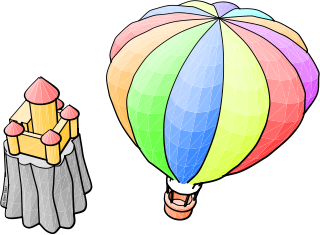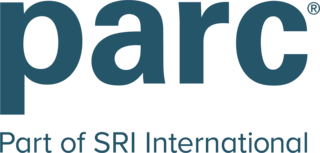
Alan Curtis Kay is an American computer scientist best known for his pioneering work on object-oriented programming and windowing graphical user interface (GUI) design. At Xerox PARC he led the design and development of the first modern windowed computer desktop interface. There he also led the development of the influential object-oriented programming language Smalltalk, both personally designing most of the early versions of the language and coining the term "object-oriented." He has been elected a Fellow of the American Academy of Arts and Sciences, the National Academy of Engineering, and the Royal Society of Arts. He received the Turing award in 2003.

Smalltalk is a purely object oriented programming language (OOP) that was originally created in the 1970s for educational use, specifically for constructionist learning, but later found use in business. It was created at Xerox PARC by Learning Research Group (LRG) scientists, including Alan Kay, Dan Ingalls, Adele Goldberg, Ted Kaehler, Diana Merry, and Scott Wallace.

SRI Future Concepts Division is a research and development company in Palo Alto, California. It was founded in 1969 by Jacob E. "Jack" Goldman, chief scientist of Xerox Corporation, as a division of Xerox, tasked with creating computer technology-related products and hardware systems.

Squeak is an object-oriented, class-based, and reflective programming language. It was derived from Smalltalk-80 by a group that included some of Smalltalk-80's original developers, initially at Apple Computer, then at Walt Disney Imagineering, where it was intended for use in internal Disney projects. The group would later go on to be supported by HP Labs, SAP, and most recently, Y Combinator.

Butler W. Lampson FRS is an American computer scientist best known for his contributions to the development and implementation of distributed personal computing.

The Xerox Alto is a computer system developed at Xerox PARC in the 1970s. It is considered one of the first workstations or personal computers, and its development pioneered many aspects of modern computing. It features a graphical user interface (GUI), a mouse, Ethernet networking, and the ability to run multiple applications simultaneously. It is one of the first computers to use a WYSIWYG text editor and has a bit-mapped display. The Alto did not succeed commercially, but it had a significant influence on the development of future computer systems.

Carl Sassenrath is an architect of operating systems and computer languages. He brought multitasking to personal computers in 1985 with the creation of the Amiga Computer operating system kernel, and he is the designer of the REBOL computer language, REBOL/IOS collaboration environment, the Safeworlds AltME private messaging system, and other products. Carl is currently a Principal Engineer at Roku, Inc.

The KiddiComp concept, envisioned by Alan Kay in 1968 while a PhD candidate, and later developed and described as the Dynabook in his 1972 proposal "A personal computer for children of all ages", outlines the requirements for a conceptual portable educational device that would offer similar functionality to that now supplied via a laptop computer or a tablet or slate computer with the exception of the requirement for any Dynabook device offering near eternal battery life. Adults could also use a Dynabook, but the target audience was children.

Lawrence Gordon Tesler was an American computer scientist who worked in the field of human–computer interaction. Tesler worked at Xerox PARC, Apple, Amazon, and Yahoo!.

Robert William Taylor, known as Bob Taylor, was an American Internet pioneer, who led teams that made major contributions to the personal computer, and other related technologies. He was director of ARPA's Information Processing Techniques Office from 1965 through 1969, founder and later manager of Xerox PARC's Computer Science Laboratory from 1970 through 1983, and founder and manager of Digital Equipment Corporation's Systems Research Center until 1996.

The Computer History Museum (CHM) is a museum of computer history, located in Mountain View, California. The museum presents stories and artifacts of Silicon Valley and the information age, and explores the computing revolution and its impact on society.

Daniel Henry Holmes Ingalls Jr. is a pioneer of object-oriented computer programming and the principal architect, designer and implementer of five generations of Smalltalk environments. He designed the bytecoded virtual machine that made Smalltalk practical in 1976. He also invented bit blit, the general-purpose graphical operation that underlies most bitmap computer graphics systems today, and pop-up menus. He designed the generalizations of BitBlt to arbitrary color depth, with built-in scaling, rotation, and anti-aliasing. He made major contributions to the Squeak version of Smalltalk, including the original concept of a Smalltalk written in itself and made portable and efficient by a Smalltalk-to-C translator.

Charles Patrick "Chuck" Thacker was an American pioneer computer designer. He designed the Xerox Alto, which is the first computer that used a mouse-driven graphical user interface (GUI).

Trygve Mikkjel Heyerdahl Reenskaug is a Norwegian computer scientist and professor emeritus of the University of Oslo. He formulated the model–view–controller (MVC) pattern for graphical user interface (GUI) software design in 1979 while visiting the Xerox Palo Alto Research Center (PARC). His first major software project, "Autokon," produced a successful computer-aided design – computer-aided manufacturing (CAD/CAM) program which was first used in 1963, and continued in use by shipyards worldwide for more than 30 years.
The Xerox NoteTaker is a portable computer developed at Xerox PARC in Palo Alto, California, in 1978. Although it did not enter production, and only around ten prototypes were built, it strongly influenced the design of the later Osborne 1 and Compaq Portable computers.
Etoys is a child-friendly computer environment and object-oriented prototype-based programming language for use in education.
Diana Merry-Shapiro is a computer programmer who had worked for the Learning Research Group of Xerox PARC in the 1970s and 1980s, after having been hired originally as a secretary. As one of the original developers of the Smalltalk programming language, she helped to write the first system for overlapping display windows. Merry was also one of the co-inventors of the bit block transfer (BitBLT) routines for Smalltalk, subroutines for performing computer graphics operations quickly which were pivotal in the evolution of user interfaces from text-based user interfaces to graphical user interfaces.
The Dr. Dobb's Excellence in Programming Award was an annual prize given to individuals who, in the opinion of the editors of Dr. Dobb's Journal, "made significant contributions to the advancement of software development." The Excellence in Programming Award includes a $1,000 prize that was donated in the award winner's name to a charity of the winner's choice. The award was launched in 1995 in the print edition of Dr. Dobb's Journal and was given each year until 2009. In his March 1995 article introducing the awards, then editor-in-chief Jonathan Erickson wrote that the award was intended to recognize "achievement and excellence in the field of computer programming." Erickson explained that the winners were "selected by a special editorial committee" of the magazine. Because Dr. Dobb's serves an audience of software developers, the Excellence in Programming Award is specifically intended to recognize resources for programmers: languages, code libraries, tutorial books, and so on. Developers of shrinkwrap software intended for retail sale, custom software for corporate use, embedded software, or general-purpose applications were not considered for the award.
Ted Kaehler is an American computer scientist known for his role in the development of several system methods. He is most noted for his contributions to the programming languages Smalltalk, Squeak, and Apple Computer's HyperCard system, and other technologies developed at Xerox PARC.














